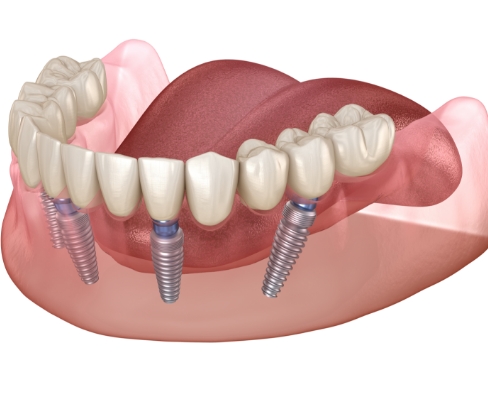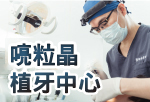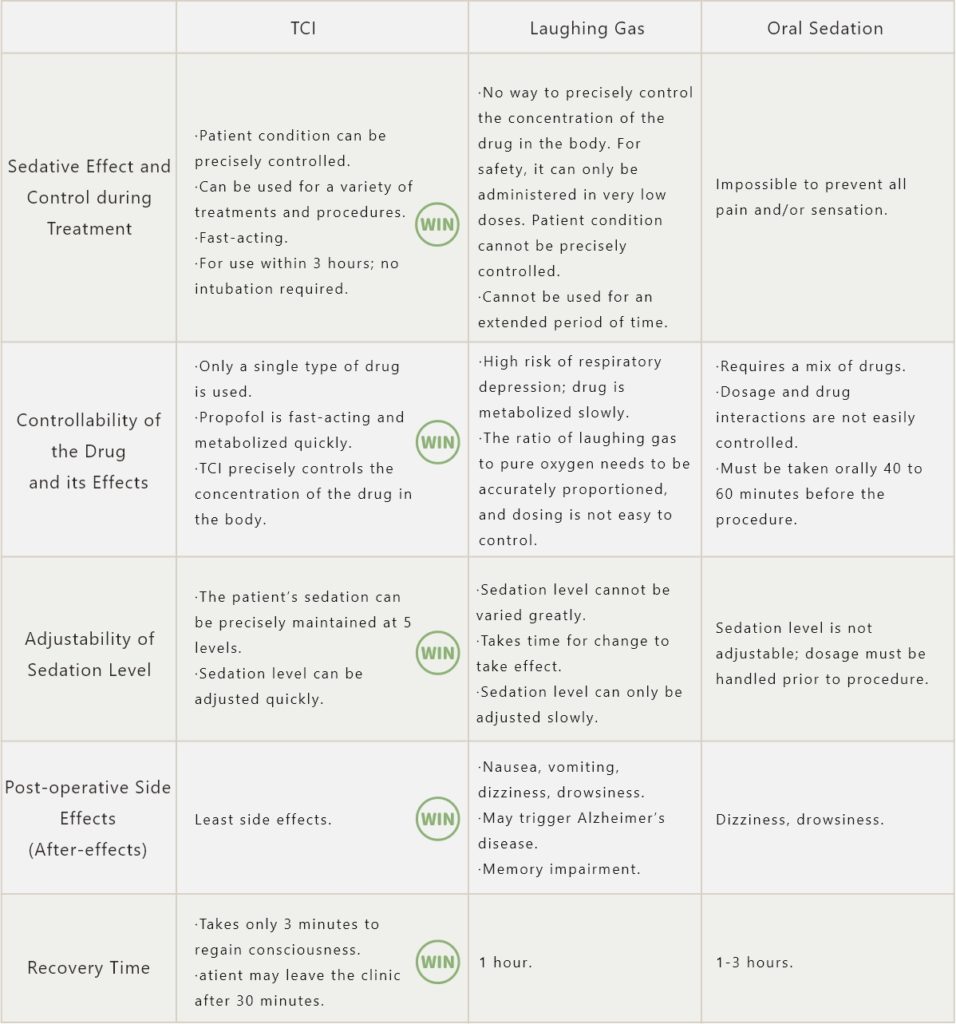
All on 6 & Target control infusion
【What is All on 4 and All on 6 Dental Implants?】
Patients wearing complete dentures can choose All-on-4 or All-on-6 dental implants treatments, which, with special mechanics, embed 4 and 6 special implants respectively into the jawbone to form an arch, if the jawbone condition permits the procedure (i.e., if you have sufficient jawbone). Unlike normal dentures, All-on-4 and All-on-6 do not result in slipping dentures, nor will they compromise your biting ability and look.

Q.Does All-on-4 or All-on-6 suit everyone with complete dentures?
No, it depends. The depth, thickness, and density of your jawbone will all be taken into consideration.
Q.How long will it take to get my teeth?
Usually, it will only take 3 to 7 days to get a temporary set of teeth.
Q.What’s the difference between All-on-6 and traditional dental implants?
▪ All-on-4 is faster.
▪ The times of procedures are less.
▪ Allows for immediate bites after the procedure.
▪ No need for bone grafting.
Q.How long can All-on-4 or All-on-6 implants last?
It depends on your habits, maintenance, and how you use them. Normally, according to clinical statistics and literature, 95% of the implants will last for five years on average.
Target control infusion
Target control infusion

The current range of dental treatments provided under sedation is very broad. In addition to pediatric dentistry, it is also used for periodontitis treatment, dental implants, tooth extractions, dental sculpting, and even cosmetic dentistry such as veneers.
TCI (target control infusion) is a sedation method which uses computer monitoring software to calculate drug concentration and administer short-acting sedative drugs through intravenous injection. The TCI computerized infusion pump will provide the appropriate dosage of medication according to a patient’s body size and keep track of the patient’s condition with a high-level physiological monitor. TCI is safer and more effective than traditional methods such as laughing gas or oral painkillers. Under this method, the dental procedure is done while the patient is in a state of light sleep. The patient will not hear the drilling noise, nor will they see or feel stress-inducing aspects of the procedure such as bleeding. Instead, it will feel as relaxing as waking up from a dream.

Dental treatment under sedation is not suitable for those who:
▪ Have serious illness and/or weakness.
▪ Have serious abnormalities in liver and/or kidney function
▪ Have a respiratory disease and/or severe abnormalities in cardiopulmonary function.
▪ Are allergic to eggs.
▪ Are older than 90 or younger than 3 years of age.
▪ Are pregnant.

The following should be noted before receiving dental treatment under sedation:
- Patients must fast for at least 6 hours prior to the procedure (i.e., no eating or drinking after 12 a.m. the night before if the treatment is scheduled for the morning, or after breakfast if the treatment is scheduled for the afternoon).
- Prior to the procedure, the patient will be given an IV drip to facilitate the administration of sedative medication.
Following the procedure, the patient should rest for at least 20 minutes on a sofa or chair.
While very few patients experience dizziness, nausea, or vomiting, if they do, they should rest for at least 30 minutes.
【Sedation Methods】
TCI | Laughing Gas | Oral Sedation | |
|---|---|---|---|
Sedative Effect and Control during Treatment |  ‧Patient condition can be precisely controlled. ‧Can be used for a variety of treatments and procedures. ‧Fast-acting. ‧For use within 3 hours; no intubation required.。 | ‧No way to precisely control the concentration of the drug in the body. For safety, it can only be administered in very low doses. Patient condition cannot be precisely controlled. ‧Cannot be used for an extended period of time. | Impossible to prevent all pain and/or sensation. |
Controllability of the Drug and its Effects |  ‧Only a single type of drug is used.。 ‧Propofol is fast-acting and metabolized quickly. ‧TCI precisely controls the concentration of the drug in the body. | ‧High risk of respiratory depression; drug is metabolized slowly. ‧The ratio of laughing gas to pure oxygen needs to be accurately proportioned, and dosing is not easy to control. | ‧Requires a mix of drugs. ‧Dosage and drug interactions are not easily controlled. ‧Must be taken orally 40 to 60 minutes before the procedure. |
Adjustability of Sedation Level |  ‧The patient’s sedation can be precisely maintained at 5 levels. ‧Sedation level can be adjusted quickly. | ‧Sedation level cannot be varied greatly. ‧Takes time for change to take effect. ‧Sedation level can only be adjusted slowly. | Sedation level is not adjustable; dosage must be handled prior to procedure. |
Post-operative Side Effects (After-effects) |  Least side effects. | ‧Nausea, vomiting, dizziness, drowsiness. ‧May trigger Alzheimer’s disease. ‧Memory impairment. | Dizziness, drowsiness. |
Recovery Time |  ‧Takes only 3 minutes to regain consciousness. ‧atient may leave the clinic after 30 minutes. | 1 hour. | 1-3 hours. |






